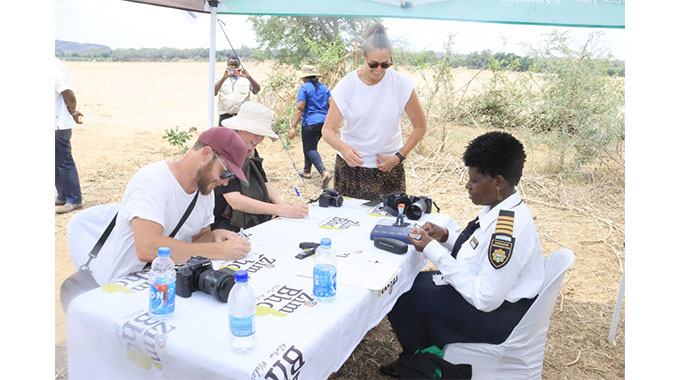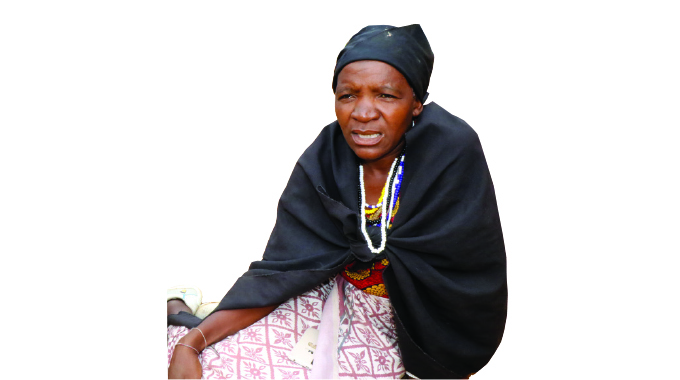SA, Zimbabwe to open tourism border at Tshikwalakwala

Thupeyo Muleya, Beitbridge Bureau
South Africa and Zimbabwe have set plans in motion to open a tourism border at the Tshikwalakwala area along the Limpopo River to boost tourism activities in the Greater Limpopo Transfrontier Conservation Area (GLTFCA).
The development follows the successful implementation of a dry run between Monday and yesterday, which saw a group of seven travel reporters entering from the Pafhuri area in South Africa through Tshikwalakwala some 130km east of the Beitbridge Border Post.

Milestone South Africa and Zimbabwe successfully implemented a dry run of an informal tourism crossing point along the Limpopo River in the Tshikwalakwala area on Monday afternoon.
They also left via the same point and are expected to profile a number of tourists attraction centres and products in Zimbabwe’s component of the GLTFCA.
It is envisaged that the new entry point will be opened on a set schedule mostly during the dry season when the Limpopo River bed will be dry.
The GLTFCA is made up of national parks from Mozambique, South Africa and Zimbabwe.
At the moment South Africa and Zimbabwe share the Beitbridge Port of Entry as the only land port, and occasionally informal borders are opened at Shashe and Tshikwalakwala for seasonal tourism events.
GLTFCA International Co-ordinator, Mr Gwinyai Muti, said they expect the new tourism border to be officially opened around March or April next year.
“The sole purpose of this tour is to test and capture GPS points for the route directly linking Kruger National Park in South Africa and the Gonarezhou National Park in Zimbabwe through affected communal land, whilst simultaneously showcasing and marketing community facilities along the route to the mini group of media houses,” he said.
“This is in line with one of the GLTFCA objectives, which seek to promote trans-border ecotourism as a means of fostering regional socio-economic development and integration.
“After this dry run, we expect the journalists from across Sadc to market this place as a destination of choice in Africa”.
Mr Muti said annually the South African component of the mega park was receiving over 1,5 million tourists and that Zimbabwe was targeting at least 10 percent of those to cross over to Zimbabwe during the course of their visit.

He said Zimbabwean authorities had covered a lot of ground in terms of seeing the tourism border operating as planned in line with the National Development Strategy 1 (NDS1) and the envisaged Vision 2030.
The officials said the identified crossing point had the potential to enhance tourism access and beneficiation linked to the wildlife economy between the Great Kruger Protected area network which includes the Makuleke Contractual National Park, Sengwe Corridor, and the Gonarezhou National Park in Zimbabwe and the Limpopo National Park in Mozambique.
“The GLTFCA recognises that communities across the international border dividing South Africa and Zimbabwe are related, and the conservation success and protection of the natural resources depend on the collective vision and action of these communities in securing and protecting national resources.
“Common challenges such as snaring, illegal bush meat industry, poaching, illegal livestock trade, land transformation, and degradation, negatively impact the conservation economy and livelihoods in the region,” said Mr Muti.

South Africa’s director of the GLTFCA, Ms Aruna Seepersadh said they were looking forward to the successful implementation of the tourism border, which was conceptualised more than a decade ago.
She said they were also expecting to get a spillover of tourists coming in from Zimbabwe through the proposed tourism border.
Ms Seepersadh said the area had great potential to turn around the lives of many ordinary people living within the mega park in South Africa and Zimbabwe.
Beitbridge East’s Chief Matibe said development players and the Government should urgently invest in community tourism development initiatives to ensure that the communities have a senseof ownership and benefit economically.

“This is a welcome development we must all embrace and it is very critical for our communities to look at economic development opportunities that come with this package,” he said.
Chief Makuleke’s aide (South Africa), Mr Humphrey Mugakula said it was critical for traditional leaders from South Africa to meet regularly and exchange notes on how best they could derive economic benefits from the opening up of the new tourism route in the GLTFCA. — @tupeyo










Comments